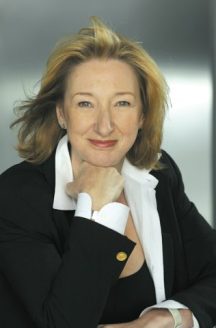As Irish America’s editor for the past 20 years I have witnessed a major sea change in the economic relationship between Ireland and the U.S.
For centuries Ireland depended on help from the U.S. but today Irish firms employ as many people in the U.S. as American companies do in Ireland.
The number of Irish-born executives in corporate America is at an all-time high.
Ireland is now the 9th largest investor in the U.S.
Irish companies in the Financial, Software, Governance, Medical Devices and Biotech fields are doing exceptionally well. And Irish product/service is being used by many of the largest financial institutions in the U.S. including Citibank, JP Morgan Chase and HSBC.
American companies that have played a major role in Ireland’s economic miracle have also gained by it. Profits of the more than 500 U.S. firms doing business in Ireland surged by 45 percent in 2003.
“The American companies benefited from the fine educational system with its emphasis on science, engineering and mathematics, and from a government that’s pro-business because they know that is pro-jobs,” said Richard Egan (Irish America, 2002) the former ambassador to Ireland, whose company EMC now employs 1,600 workers in its Cork plant.
Another factor that has contributed to Ireland’s success is the number of U.S.-based organizations that foster growth and prosperity in Ireland. Many of our Business 100 are involved in such groups. To name a few, Jim Quinn is the chairman of the Smurfit School of Business at University College Dublin, having recently taken over from Tom Moran. Mike Gibbons is President of the Ireland U.S. Council, picking up the mantle from Mike Roarty.
And any number of our honorees are involved with The American Ireland Fund which annually hosts 70 events attended by 40,000 people in 39 cities around the world, and promotes peace, culture and economic stability in Ireland.
Under the stewardship of chairman Loretta Brennan Glucksman (see interview pg. 83) the Fund raised 111 million dollars over the past five years.
Lew and Loretta Glucksman have also personally contributed to numerous educational projects in Ireland, including establishing libraries at Limerick and Cork universities. All this in addition to their splendid gift to New York University of the center for Irish Studies.
Thanks to the Glucksmans and others — Brian Burns has built the Burns Library at Boston College, and Donald Keough bequested a Chair in Irish Studies to Notre Dame — thousands of students all across the U.S. are discovering their Irish heritage.
As they study the literature, history, politics, and music of Ireland they are also learning that it is no longer the place that their ancestors left in hard times.
Today Ireland’s modern confident economy is the envy of Europe, and it has spawned an equally modern and assured generation of Irish.
“For thirty years we have been the gifted musician playing the tune. From now on we want to be the composer writing the music,” said the former Tanaiste Mary Harney, speaking in Washington to a gathering of senior business figures from the U.S. and Ireland, both North and South.
I hope this new composition includes a song for Irish-America. It would be nice if some of Ireland’s newfound wealth funded an Irish-American Studies Program (or a series of studies). For there is a need in Ireland for students to learn the history and contributions that Irish-Americans have made to the world.
Irish-America too needs to address its relationship with this new Ireland. At the moment there is a lot of bad feeling on both sides over the war in Iraq (see Ambassador Egan’s letter on pg. 11). In all the discord it’s easy to forget the value of our unique relationship which helped bring about, amongst other things, the Good Friday Agreement.
As Loretta Glucksman says in a wonderful close to her interview. “I hope that we can grow with the evolution and keep the relationship, because it’s invaluable to both our cultures. What made the people that came to America do so spectacularly well was what’s in their DNA from Ireland, so it’s a full circle.” ♦


Leave a Reply